Episode #340: When to Say Goodbye: Navigating Challenging Math Coaching Relationships
LISTEN NOW HERE…
WATCH NOW…
As a math coach, building relationships with teachers is critical to fostering meaningful growth and collaboration. But what happens when a math coaching partnership becomes stagnant or even toxic? In this episode, we tackle the delicate topic of ending a math coaching relationship when it’s no longer productive. We’ll explore signs that it’s time to move on, strategies for reflecting on what went wrong, and ways to maintain professionalism and integrity during the process. Whether you’re navigating mismatched math goals or unproductive dynamics, this episode will empower you with tools to manage challenging math coaching relationships and refocus your energy on supporting teachers who are ready to grow
Key Takeaways:
- The importance of building relationships: Strong, trust-based relationships with teachers are foundational to effective coaching and collaboration.
- Recognizing when a coaching relationship isn’t working: Signs that a partnership has become stagnant or toxic include mismatched goals, lack of progress, or unproductive dynamics.
- Strategies for reflection: Reflect on what might have contributed to the relationship’s challenges, including your own actions or approach, to learn and grow as a coach.
- Maintaining professionalism and integrity: When ending a coaching relationship, handle the situation with respect, clear communication, and professionalism to preserve trust and maintain the focus on supporting students.
- Refocusing on growth opportunities: Redirect your energy to working with teachers who are open to collaboration and growth, ensuring your efforts have the greatest impact.
Attention District Math Leaders:
Not sure what matters most when designing math improvement plans? Take this assessment and get a free customized report: https://makemathmoments.com/grow/
Ready to design your math improvement plan with guidance, support and using structure? Learn how to follow our 4 stage process. https://growyourmathprogram.com
Looking to supplement your curriculum with problem based lessons and units? Make Math Moments Problem Based Lessons & Units
Be Our Next Podcast Guest!
Join as an Interview Guest or on a Mentoring Moment Call
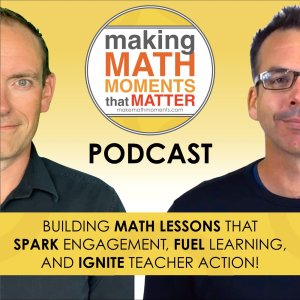
Apply to be a Featured Interview Guest
Book a Mentoring Moment Coaching Call
Are You an Official Math Moment Maker?
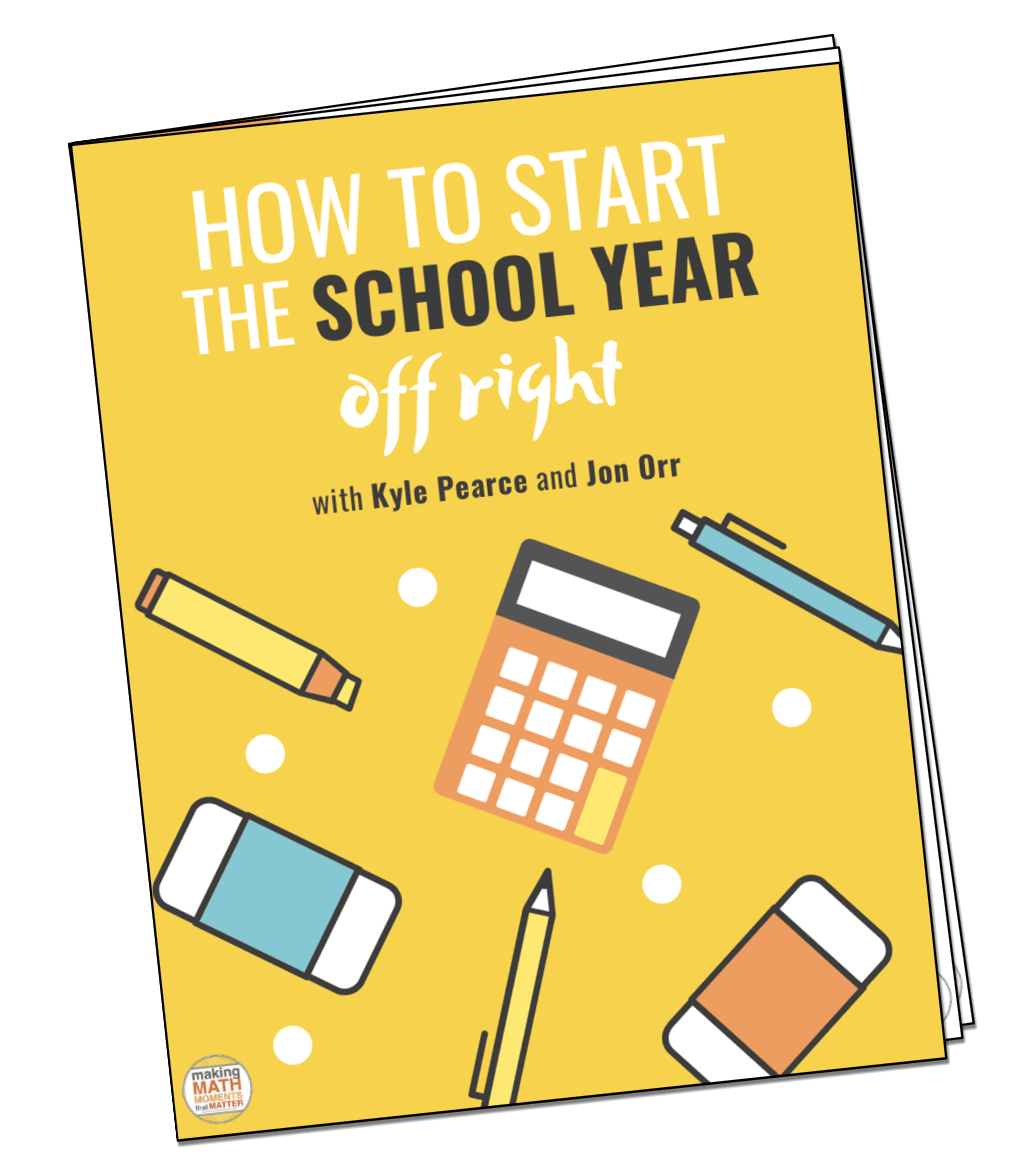
FULL TRANSCRIPT
Jon Orr: Okay, let’s talk about, I’m gonna say this phrase, I’m gonna say, when to say goodbye, which sounds harsh. What sounds harsh to say, when is the right time to say, hey, I’ve been working with a teacher and the relationship is hard or I’m getting pushed back or it’s too much pushback and what are my options?
Okay, I think we’ve, as coaches, as consultants, as coordinators, we experience working with a teacher who does not want the help. And we want to talk about what do we do? So I got Kyle here, I got Yvette here. Let’s get into it, folks. What do we do in these types of situations?
Kyle Pearce: I love it. I love it. Well, what I’m gonna say is that I’ve been there many times before and I’m sure that both of you feel the same way and you know, at least what pops into my mind as soon as you know, we were talking about this topic was you almost have kind of two battles, you have a battle with potentially a teacher that you’ve been working with or trying to work with. But then you also have a battle against yourself because now you’re worried like
Jon Orr: Ooh. Tell me stories. Tell me stories.
Kyle Pearce: Maybe this means that I’m just not very effective as a coach. And here’s the hard part is that it could be one, it could be the other, it could be a bit of both, but what we have to at least be able to do is be able to like, I think, like start recognizing that there’s actually an issue, right? That like things aren’t very productive. Why are they not productive? And like, I don’t know, like Yvette, like what are some of the, maybe the thoughts that pop into your mind when
When things maybe just aren’t feeling productive, usually something isn’t productive. like, what is that? How does somebody think about this? And how do they analyze whether maybe they need to dig in a little bit here and do a little bit of thinking?
Yvette Lehman: Well, and I think you kind of nailed it, Kyle, where it’s like, we take it super personally, right? And that actually sometimes doesn’t help because then when you are taking somebody’s response to you personally, you end up reacting sometimes in a way that’s also defensive or feels personal, right? We get almost emotionally heightened when a relationship feels strained.
Jon Orr: How can you not?
Yvette Lehman: But I think it’s important to sometimes take a step back and recognize that maybe that person’s response to being in their classroom or your offer of help has actually nothing to do with you at all. It’s just where they are right now. could be other stressors they have in their lives. It could be past experiences. Like maybe they had a coaching experience in the past where they felt the trust was broken. So kind of our first bit of advice is that when a relationship is not going well, it’s super important to recognize that it’s not going well.
and to identify potentially your part in that, reflect on what you could have done differently, but also try, and I know it’s so hard not to make it personal. I think our narcissistic brain sometimes wanna jump to the conclusion that this is all about us, when in reality it’s likely about that person and where they are in the experiences that they’ve had.
Jon Orr: I guess how do you make that easier on yourself? How do you battle that wonder about, it, it is not, even if you recognize it’s not about me, it’s about probably the things that they’re going through. How do you navigate that and then still kind of come out the other side going like, do I stick with this person or do I?
Do I, you I’m going to use the phrase cut and run because sometimes I think we have that thought. Well, we have that thought, right? It’s like, don’t want to abandon this person. I’m a coach. I’m here to support them and their growth and they’re clearly not growing, but they’re pushing back on me on that growth. I do recognize that it’s a them in a way and it’s not about me. It’s about the work that they’re doing, but it’s still hard.
Kyle Pearce: Kick them to the curb. Yeah. I’m gonna I’m gonna rewind just slightly here though and say like let’s not be too quick to dismiss that it has nothing to do with ourselves right so like you know what what I’m interpreting from what Yvette’s saying is you know in many cases it’s probably not a you issue but here’s the crazy part is like maybe it is and at least I think you need to be reflective enough in in
This involves, I think, even the pre-planning piece, like not just going into a classroom or into this relationship without doing some sort of thinking ahead of time as to, you know, like how, what is my tone? What is, you know, am I coming in? Like you don’t want to come in like a bull in a china shop, right? Where you just, you barge in and you know, you have a set agenda, which I think sometimes some of the most wonderfully intentioned leaders
have this idea in their mind and you set your own goals as for what you want to achieve with all of the educators in your school, your district, wherever it might be. And sometimes we can come in a little hot, like that, and I know I’ve been guilty of it. But the key is trying to at least be able to be reflective enough to try to first just go through sort of the script in your mind a little bit as to.
How did the interaction go? Is it possible that maybe I had something to Is there something I can address? Is there something I can do differently? then, because this isn’t a one and done. You don’t walk into one classroom one day, one interaction, and then decide, like John’s saying, cut and run. You’re going to be working likely over time before you start to recognize that there’s an issue.
And I think the key is just making sure that you’re not too hard on yourself, meaning, you know, automatically assuming it’s you. But we also don’t want to dismiss that, you know, maybe there are some things and, and I’m sure that most people are going to come in with different approaches and you’re going to be thinking of different ways. And really, I think today’s discussion is, okay, I’ve already been doing that. I’ve been trying to come in with different ideas. I’ve tried to come in softly. I’ve tried to come in with this idea. I’ve tried to keep things productive and I’m, it’s just not.
getting anywhere and we’re now at the stage where we go, okay, this isn’t productive. And, you know, it, it, I don’t think that it has, you know, a hundred percent, you know, onus is on me here. What do we do now? So I think that’s kind of where, you know, we want to branch off from and say, okay, you know, it’s not necessarily you, but something isn’t working. So what do we do? Like, where do we go next?
Jon Orr: Before we get into that component, addressing that question, I do want to recognize what you just said is about thinking about, like you said, coming in with ideas. I’ve come in with ideas, it’s still not working. It’s like one of the things that we’ve coached, the coaches that are working with us in the District Improvement Program is approaching
those interactions with that leading question that we’ve often used here on the podcast, which is what is the pebble in your shoe? And sometimes we come in with the preconceived ideas of what they could be doing instead of hearing where they think the problems are, where they think they’re, where they need support. And I think you’re right. It’s like, that’s a question that maybe could fix the relationship by just readdressing how
you have approached the support you have been offering and not you’ve been saying, these are the things we could be doing instead of saying like, where do you like, where’s the pebble currently rattling around in your shoe? And what can we do to support that pebble right now? Cause that could be the way to maybe fix the relationship, but maybe not. let’s say, let’s say you did that and it’s still not going well. You know, like the relationship was not fixed. Yvette, what do you think?
Yvette Lehman: Yeah, I think that’s all good points, right? There’s ways that we can foster relationships, we can change our approach, we can, you know, seek more voice from the educator to try to position them and empower them in this coaching relationship. But let’s imagine we have done all those things, and we’re just still feeling that it’s just not productive. We’re not being welcomed into the room. are having a really, we record an episode about getting stuck in the helper zone.
And I’ve been in the helper zone for months now and I see no signs of the teacher’s willingness to engage in any type of thinking together. Is that the best time and energy for me and my coaching role? And we often know, right, sometimes a coaching role is only guaranteed for a single year and we want to ensure that we have the greatest impact possible. And I would argue there are always other places we could be and other teachers we could be working with.
So if we’re dedicating a lot of our really valuable time and you know, I’ve yet to meet any district who says, you know, they have more than enough coaches, like they have coach, you know, enough coaches to support everybody. So typically, you know, it’s a luxury to be able to have the opportunity to work with a coach. So if we’re aligned somewhere that the person is just not ready for that learning at that time or other stresses in their life are impacting their ability to make any change, do we continue to invest our time there or
Jon Orr: All right. Sure.
Yvette Lehman: Do we find a professional way to break free of that relationship to seek other opportunities where there could be potential growth?
Kyle Pearce: I love it. I love it. And I think a lot of that, you know, there’s kind of a couple things that might hold you back right from actually trying to take that next step. One is that, you know, you don’t know how to. So we’ll talk a little bit about that. Like, you know, and I think I think that’s something that that can be addressed and we can do this in a way that is professional and doesn’t actually, you know, emotionally hurt anyone or anything like that. But I think one of the parts that might hold you back from
actually thinking long and hard about making this shift and making this move or kicking them to the curb as John would call it is, you know, is really fighting and battling yourself on the whether you could be successful in helping that person change. And I think that is one of these challenges that, you know, we really have to be able to swallow your pride a little bit to say it again, if it isn’t you, it
might also not be your method or it might not be the fact that you’re not a good mentor or coach or leader, but rather just that again, the timing may not be right for that person at that time and you can work as hard as you want and you could probably get very stressed out as well. I know that I’ve been there when you’re trying to make a coaching relationship work, you want the best for that person. Sometimes you want the best for that person more so than they do.
for themselves, right? And it can be for any number of reasons. And therefore we really have to zoom out and say, where can I be of most help to the district, to the school, to the grade band, whatever level you’re working at. And I think that is what makes it easier for you to go, you know what? It’s not a gone forever. It’s not a I’ll never be back to help this individual, but maybe it’s a pause for now, right?
and we have to think about that long and hard and be able to in your mind, be okay with it. It’s not a failure just because you’re going to try opening a new door with a new educator at that time.
Jon Orr: Well, if you think about it, even thinking about that move is hard for us as educators because our history and our experience has been working with students. And when we’re working with students, and I don’t know about you guys, but most, how many students are super eager to do as much math as they can? You get some like that, but most of the work that you’re doing is where, and this is where the real impact you make.
is how do help students that have traditionally hated math and not enjoyed math and didn’t get math and they say that, right? And then you go, I’m not going to abandon this student and I’m not going to give up on this student. I’m not going to like say that this is, I’m going to end this relationship and I’m going to move on to another kid. Even though I probably have said that in the past, like my old self may have been like, well, I tried to help them three times and now I’m just going to like focus on this kid. And, but, but I mean like,
I’m sure there’s people that do that. But I mean, if you’re in a coaching role, it’s likely you got tapped on the shoulder because you didn’t do that with students. And now you’re like, I don’t want to do that with another person I’m teaching, you know, like we’re educators.
Kyle Pearce: You’re the least equipped person to, you know, to be in this role where, know, you’re going to put a pause right on that relationship. You know, you’re like, I’m not very good at that. Right.
Jon Orr: Yeah, totally. It’s not part of your makeup to say, I’m not going to support this person.
Yvette Lehman: But now it’s time, John. Okay, we just have to break up. It’s just, the signs have been there. You know, we’ve done our best. And I think another thing too, is we’ve gathered educator from, or we’ve gathered feedback from the educator and they’re the ones who are identifying that this is not a good fit for them at this time. And so maybe you’re getting pressure from your supervisor, you know, or from the principal of that building. You’ve been asked to work with this teacher.
Jon Orr: You’re breaking up with me.
Yvette Lehman: but you’ve been collecting evidence and you’ve been gathering voice and you’ve just decided that this is not the best fit at this time. I think it is challenging certainly and sometimes getting support from the principal or from your supervisor to make this transition could also be challenging. But again, coaching support is few and far between. There are always other educators who are eager for the learning or maybe just in a different position and ready for that learning.
to continue investing your time in a place that’s just really not productive, maybe it’s not the best use of the limited budget or the limited time that you have in that role. So Kyle, you kind of alluded to the fact of how do we do this? So there’s people listening who are like, yes, I hear you. I’m in this situation. There’s a particular teacher that I’ve been asked to work with and…
We’re just not, I’m not making any gains with this teacher. They’re not in a place to receive this learning or to engage in this partnership. I go in and they ask me to work with this one student every time, but that’s not really my role. But I know that, you know, teacher down the hall is eager and ready and has been asking me to come in. So how do you actually initiate the conversation to say, I just don’t know that this is working right now. I’m going to shift my energy elsewhere.
Kyle Pearce: Well, the part that I think is really important is that ending, as we call it, ending the relationship doesn’t necessarily have to be as explicit to the educator. Meaning, if it is true, right? No, no. But what I think in your mind, you’re ending this relationship for now. But I think for that educator is what you really want to say.
Jon Orr: You’re going to ghost them? Is that what you’re saying?
Kyle Pearce: And I think you want to be open and honest about this is that it’s time for you to move on to another classroom to, you know, help in another area. Right. And that’s not, they don’t necessarily have, you don’t have to give them the full rundown of the whole analysis of why this isn’t working and so forth. It’s, this isn’t a, a relationship like a high school breakup, right? Like I think what you want to do is, is you really want to be just
essentially letting them know that, you know what, there’s some opportunities in some other classrooms where I’m going to do some co-teaching. And because, you know, I can have a direct impact there, you know, this is what I might be doing during this regular time slot that I’ve been coming into this classroom. But the caveat here, and this is what I think is really important, is thinking about
maybe ending the, I’m gonna be in here at every Tuesday at whatever time or, know, Tuesdays and Thursdays at whatever time is thinking about what else can you do that will still allow a little bit of support to be provided? And I think of our breadcrumb strategy that we talk a lot about, right? So it’s like, you’re in there, you’re not going to be in there as often, but you’re not gonna forget about them, right? And what really…
kind of popped into my mind, John, was when you were talking about that student in our classrooms, even though you’re not going to give up on any student, there are some days where that student might be really having a rough day. And that’s probably not the day that you’re going to sit with them and try to really get them to be the best they can be, because they might need some time alone. So I haven’t given up on you. I’m just pausing for now. And I am going to come back to you. Whereas
in the coaching world, I think the same is true where, you know, now what you’re going to do is you’re going to be just open and honest about how you’re going to shift your schedule moving forward so that you’re able to get into some other classrooms. And then you get to decide, you know, how you, you know, how you design that conversation to make sure that that educator, you know, it doesn’t have to be a direct conversation to say, well, the reason I’m leaving is because you haven’t been open for me to be helpful to you.
you know, and maybe for some people that that will work. I know for me, I would much rather look at it and say, you know, we know I’ve been coming in here for quite a bit of time. And I feel like at this point, I think that, you know, we’ve done quite a bit together. And, you know, I’m going to come back blank number of weeks blank, you know, after so long, or I’m going to check in to see is there anything that I might be able to do support you in the meantime? How does that sound to you?
right and that’s where you can kind of like you know volley the ball back to that individual as well so that they can let you know what they’re thinking and if it is an unproductive relationship they’re probably going to be okay with this arrangement right but it also doesn’t have to get too emotional it doesn’t have to get too specific you know unless you feel like it’s necessary at that particular moment but I want to hear Yvette like how are you doing the
ending of the relationship for now? Is it coming out and you’re giving them everything that you’re thinking? Or do you have a strategy or something in mind that you know that that you’re thinking about here?
Yvette Lehman: that makes a lot of sense. It’s, you know, I like the idea that the door is staying open and that you’re offering to support but maybe the support is a little bit less direct. So, you know, I’ll still be here in the building. If you want to connect on your prep, I’ll be available. you know, continuing to make yourself available to that person but pulling back on that scheduled direct support makes a lot of sense. So you’re not disappearing from their life. You’re not ghosting them but you’re just putting your energy elsewhere.
Kyle Pearce: Right. And I wonder too, if it’s like, you know, if there’s something that let’s say you are actively focusing on, right? One of the objectives, let’s say in your math program, in your school or your district is I, you know, the easiest one is, like a number talks at the beginning of, you know, of class. If that that’s the goal, but this teacher hasn’t really been open to it at this point, you can also leave them with that idea, right? It’s like, Hey, listen, if you know, if you’re thinking about adding this thing, this
pedagogical move, this content knowledge, this, whatever it is that you’re trying to focus on as a school or a district, you can leave that for them so that you leave the door open to say, listen, if you do want to explore more, I’d be happy to come back in so that we can really hone in on this one specific objective because that’s what we’ve been focusing on as a school or as a division, you know, and I think that can kind of leave
things in a positive light and it also leaves the door open that you’re still encouraging them to kind of make some of the shifts that you were hoping to do when you came into the classroom but you weren’t really seeing happening.
Jon Orr: I like that approach because what you’re doing is you’re saying the focus is still here and these are the objectives that are aligned with the focus on the professional development and support we’re trying to provide as a school or a school district that’s in alignment with our school goals or our district goals because we have those things. You’re still making it clear that that’s the support you’re there to provide.
when they’re ready and here’s maybe what you can do in the meantime. Like you’re in a way like you’re leaving that there but also reinforcing the goal and the priority of the work. A wonder I still have here for you two folks is, okay, how do I, and it’s two different wonders but I wanna share both with you. One is how do you have this conversation and what do you say to your supervisor?
or the principal of the school. And then the second is, in a similar way, is what are you… I wonder about the implication of what the rest of the teachers think as well. Like, are we concerned about like, hey, is it clear that that teacher didn’t work or that coach didn’t work with that teacher? And is that telling me I can opt out too? Or, you know what I mean? Like, so it’s like, what is the… the impact that happens when this happens with the rest of the community.
Yvette Lehman: That’s a great question. Like really asking the tough questions today, John. You know, I don’t know that I have an answer for that, but let me ponder, let’s ponder this and then maybe we can circle back to it. I guess my question is, you know, what’s the alternative? So if I don’t make this bold choice to part ways with the teacher where the relationships unproductive defined other opportunities for growth, then what happens when the year comes to an end?
Jon Orr: Who wants it? I know.
Yvette Lehman: So now I’ve dedicated an entire year in a room that was unproductive, where I felt I had right. And so as much as there may be challenges in approaching these conversations, getting support from your admin or possible perception from the rest of the staff, I guess that is worth it in my opinion, over remaining somewhere where you know.
Jon Orr: Yeah, you didn’t hit your key result probably.
Yvette Lehman: your impact, like you’re measuring your impact and the data is telling you, you are not supporting change in that room.
Kyle Pearce: you are perpetuating sameness, right? And, and, and I think when you say it that way, I think that’s going to be a big epiphany for a lot of people listening because this topic, I think we all knew it coming into this conversation, you know, it sort of sounds bad on the outside, right? Because again, it isn’t about, you know, sort of giving up on someone, but rather by just trying to redirect the very limited resources.
that we have, right, to support educators. And if we can do that the best we can, we can then at least start aiming for, you know, some of those objectives and aiming for some of that change rather than getting to the end of the school year and actually just feeling more frustrated than anything, because you probably tried even harder because you were trying to make change in that classroom, but it didn’t happen. And therefore, you’re in the same spot if not working backwards.
Yvette Lehman: And maybe, you know, a last thought to leave our listeners with today is imagine you take a step back from that classroom and you start working with another teacher down the hall. And, you know, there’s an enthusiasm and excitement from that educator that you’re supporting and that spreading excitement in the building for opportunities to work with you. And maybe, you know, because the teacher that was reluctant is hearing from their colleagues how positive the experience was when you were co-teaching. Maybe that’s what they need to come around to
the idea and to Kyle’s point, like maybe they just weren’t ready then. Maybe it was a bad time for them. Maybe there were stressors in their life and their bandwidth was compromised. And so I just, I am fearful of yet another year going by where we’ve stayed in the same place because that’s where we started and we want to see it through knowing that we’re just not going to have the impact we were hoping for.
Jon Orr: Interesting. It’s like the way you’re describing that moment is to say like, I know what it looks like when I have success and I know what it looks like when I need to move on so I can get another success, right? Like we need to compound our successes and you have to decide where is the cutoff point to say, okay, do I keep going here?
because I’ve always done it that way? Or do I say this is where my cutoff point lies so that I can still get successes by the end of the year? Because I think you’re right, like our resources are limited, our coaching is limited, the impact that we have is limited, the students wouldn’t, you like, you know, the impact on students is timely. Like those students move on year to year, like, often wonder about the impact we have on the students in front of us.
when we’re trying to have professional development for our future students, but they’re still sitting in front of you and we still have to worry about them. So are we making an impact on those ones and can we make an impact on more students in this way, which is maybe the conversation you have with your supervisor and your leader and the principal.
Kyle Pearce: Yeah, I think a great place, you know, for some takeaways here for everyone walking away is really thinking about, you know, when we do go into a new coaching relationship is how do we best position ourselves so that we can build that trust and we can build that, you know, vulnerability that’s required for an educator to welcome you into their classroom. And I think
Everyone’s going to have a different sort of we’ll call it like secret sauce to their approach, right? Everyone is different. Everyone has a different personality. So there’s no one way to do this, but trying to identify what you feel is going to work best in your role and in your skin, I think is really helpful. And I think for me, the word is vulnerability. And if I can come in and I can be the first vulnerable person in the relationship, I think you’re setting
yourself up for at least the best shot or at least I’m setting myself up for the best shot because again, this might be different for a different person. But if I can go in there and if I can help to build trust by kind of bringing down the guard, bringing down the shield a little bit, at least you’re putting yourself in the best position possible so that you can do the best with that relationship at that time. But then at some point,
you do need to have, you know, a little bit of a critical eye on the entire relationship to determine, are we making progress or is it time for me to potentially explore other opportunities in the district for coaching?
Jon Orr: When I think about the six key components of effective mathematics programming at the district level or even in the classroom level, like we talked about a few things here in this episode, but I think what stands out for me is we’re talking about professional development structure, but also which is the limbs of our tree. So we’re like thinking about the limbs of our tree and how do we structure this effectively, which is in a way sometimes how you think about coaching and coaching interactions. But I think,
Another thing for me is about how do we align with the mindset of, which is the soil, the water, the sunlight of our surrounding our tree. How do I think about these interactions myself? And the thing that I think one of my takeaways is when you think about these, like, because you’re going to feel like that’s a failed relationship, but it’s like, there’s no failures. It’s like, you’re just learning experiences, right? So either you have a success,
or you have a learning experience. You don’t fail. It’s just, what did you learn? So that you can apply that to the next relationship. And we will always just get better if we have that mindset, which is our soil, water, sunlight of the tree that we’re trying to grow.
Thanks For Listening
- Book a Math Mentoring Moment
- Apply to be a Featured Interview Guest
- Leave a note in the comment section below.
- Share this show on Twitter, or Facebook.
To help out the show:
- Leave an honest review on iTunes. Your ratings and reviews really help and we read each one.
- Subscribe on iTunes, Google Play, and Spotify.
DOWNLOAD THE 3 ACT MATH TASK TIP SHEET SO THEY RUN WITHOUT A HITCH!
Download the 2-page printable 3 Act Math Tip Sheet to ensure that you have the best start to your journey using 3 Act math Tasks to spark curiosity and fuel sense making in your math classroom!
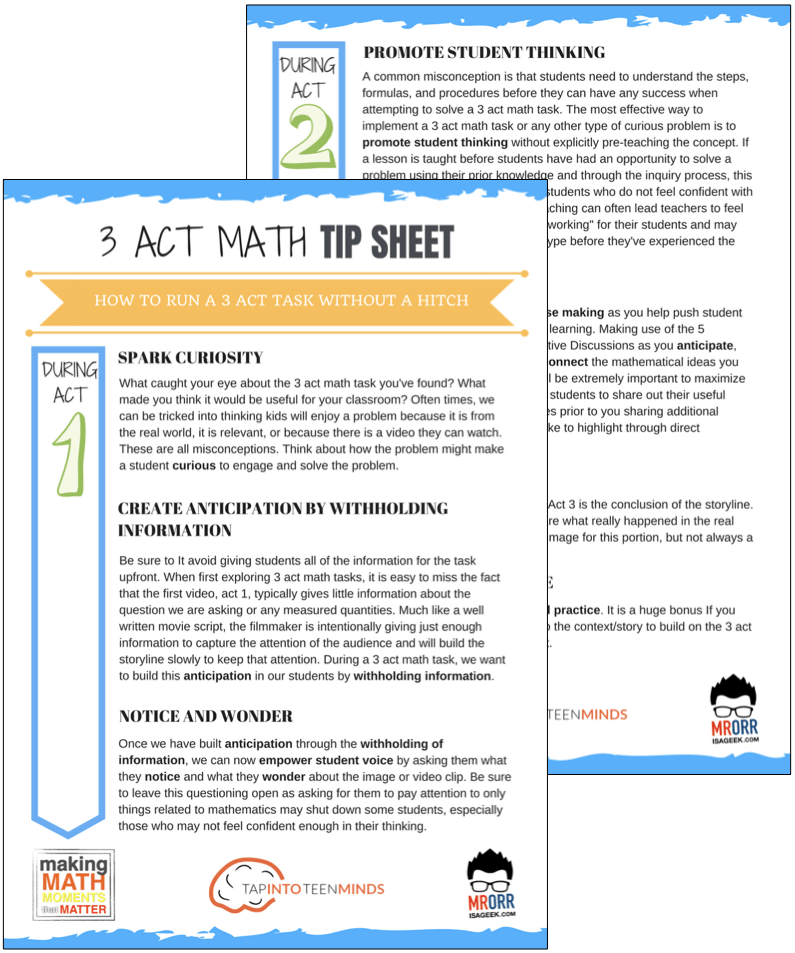
LESSONS TO MAKE MATH MOMENTS
Each lesson consists of:
Each Make Math Moments Problem Based Lesson consists of a Teacher Guide to lead you step-by-step through the planning process to ensure your lesson runs without a hitch!
Each Teacher Guide consists of:
- Intentionality of the lesson;
- A step-by-step walk through of each phase of the lesson;
- Visuals, animations, and videos unpacking big ideas, strategies, and models we intend to emerge during the lesson;
- Sample student approaches to assist in anticipating what your students might do;
- Resources and downloads including Keynote, Powerpoint, Media Files, and Teacher Guide printable PDF; and,
- Much more!
Each Make Math Moments Problem Based Lesson begins with a story, visual, video, or other method to Spark Curiosity through context.
Students will often Notice and Wonder before making an estimate to draw them in and invest in the problem.
After student voice has been heard and acknowledged, we will set students off on a Productive Struggle via a prompt related to the Spark context.
These prompts are given each lesson with the following conditions:
- No calculators are to be used; and,
- Students are to focus on how they can convince their math community that their solution is valid.
Students are left to engage in a productive struggle as the facilitator circulates to observe and engage in conversation as a means of assessing formatively.
The facilitator is instructed through the Teacher Guide on what specific strategies and models could be used to make connections and consolidate the learning from the lesson.
Often times, animations and walk through videos are provided in the Teacher Guide to assist with planning and delivering the consolidation.
A review image, video, or animation is provided as a conclusion to the task from the lesson.
While this might feel like a natural ending to the context students have been exploring, it is just the beginning as we look to leverage this context via extensions and additional lessons to dig deeper.
At the end of each lesson, consolidation prompts and/or extensions are crafted for students to purposefully practice and demonstrate their current understanding.
Facilitators are encouraged to collect these consolidation prompts as a means to engage in the assessment process and inform next moves for instruction.
In multi-day units of study, Math Talks are crafted to help build on the thinking from the previous day and build towards the next step in the developmental progression of the concept(s) we are exploring.
Each Math Talk is constructed as a string of related problems that build with intentionality to emerge specific big ideas, strategies, and mathematical models.
Make Math Moments Problem Based Lessons and Day 1 Teacher Guides are openly available for you to leverage and use with your students without becoming a Make Math Moments Academy Member.
Use our OPEN ACCESS multi-day problem based units!
Make Math Moments Problem Based Lessons and Day 1 Teacher Guides are openly available for you to leverage and use with your students without becoming a Make Math Moments Academy Member.
Partitive Division Resulting in a Fraction
Equivalence and Algebraic Substitution
Represent Categorical Data & Explore Mean
Downloadable resources including blackline masters, handouts, printable Tips Sheets, slide shows, and media files do require a Make Math Moments Academy Membership.
ONLINE WORKSHOP REGISTRATION

Pedagogically aligned for teachers of K through Grade 12 with content specific examples from Grades 3 through Grade 10.
In our self-paced, 12-week Online Workshop, you'll learn how to craft new and transform your current lessons to Spark Curiosity, Fuel Sense Making, and Ignite Your Teacher Moves to promote resilient problem solvers.
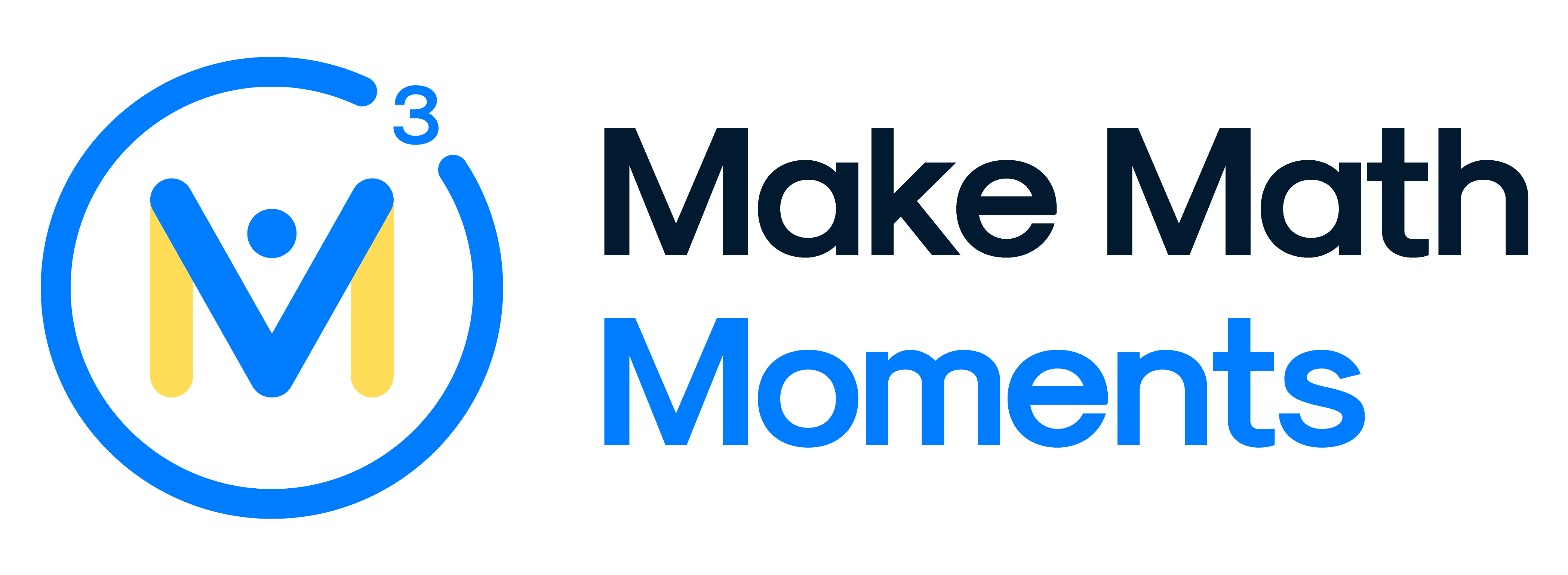



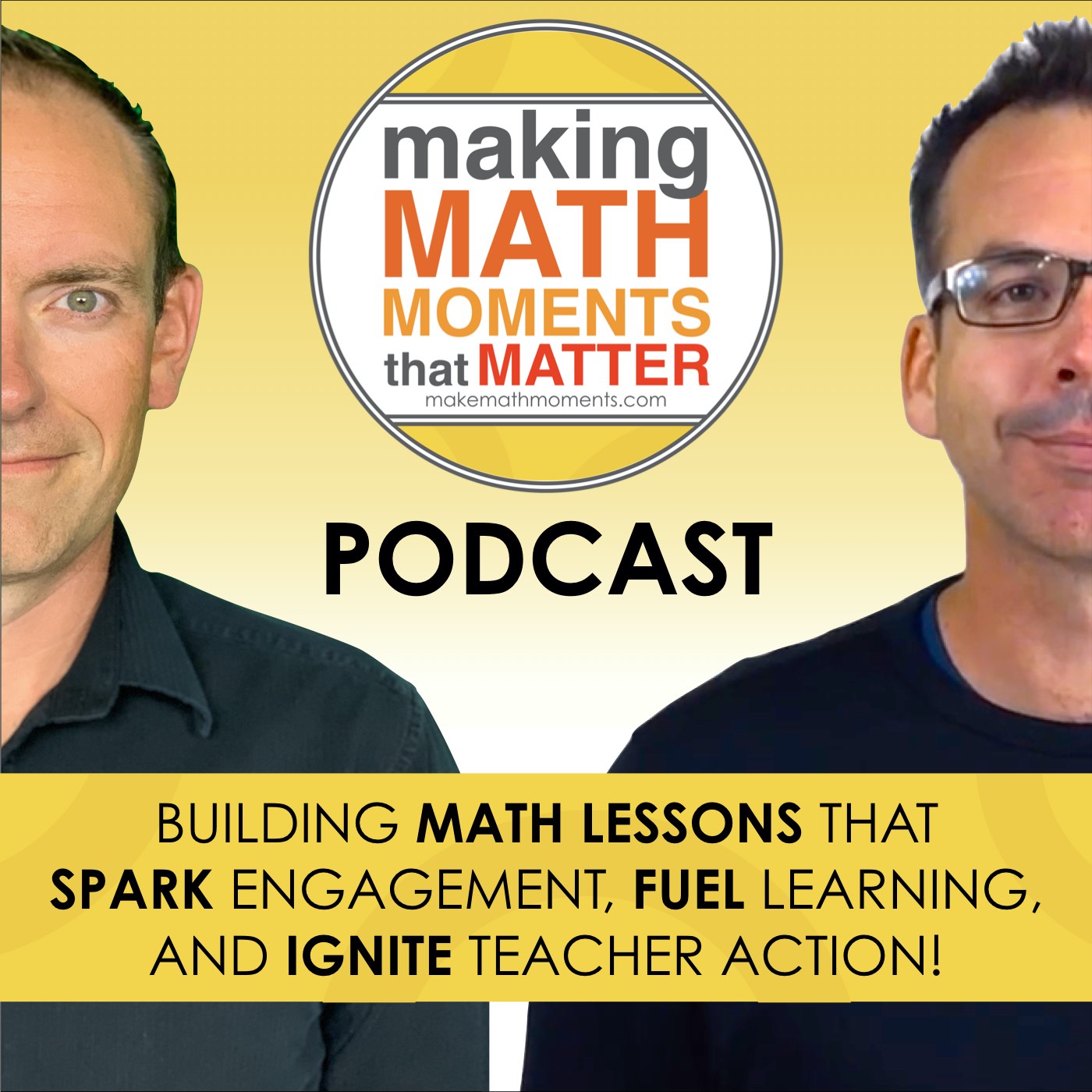
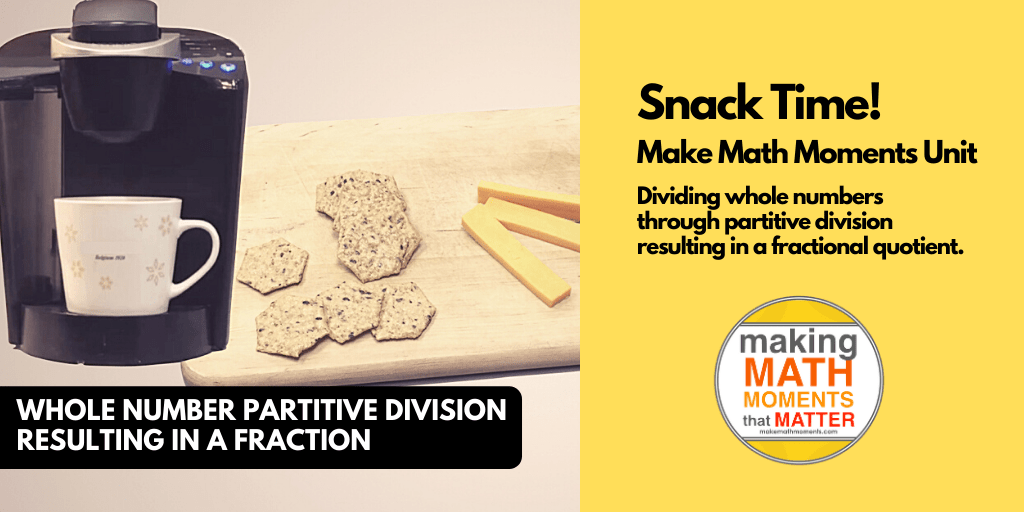
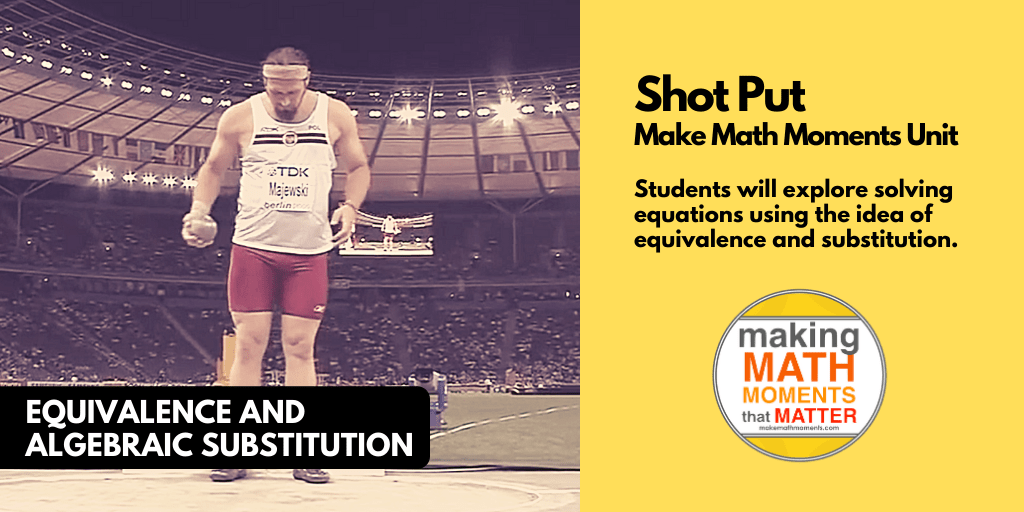
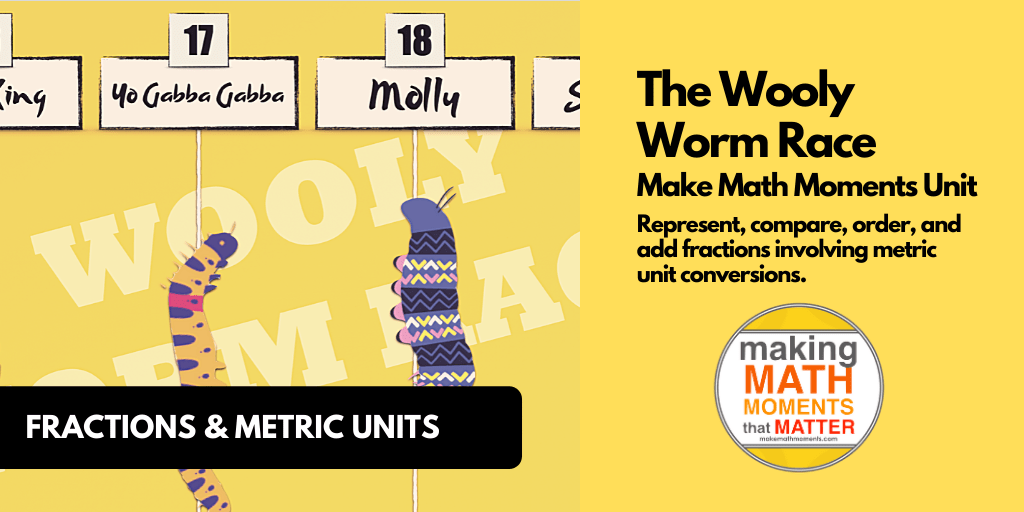


0 Comments